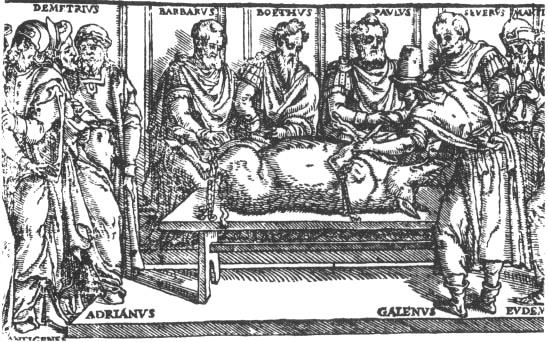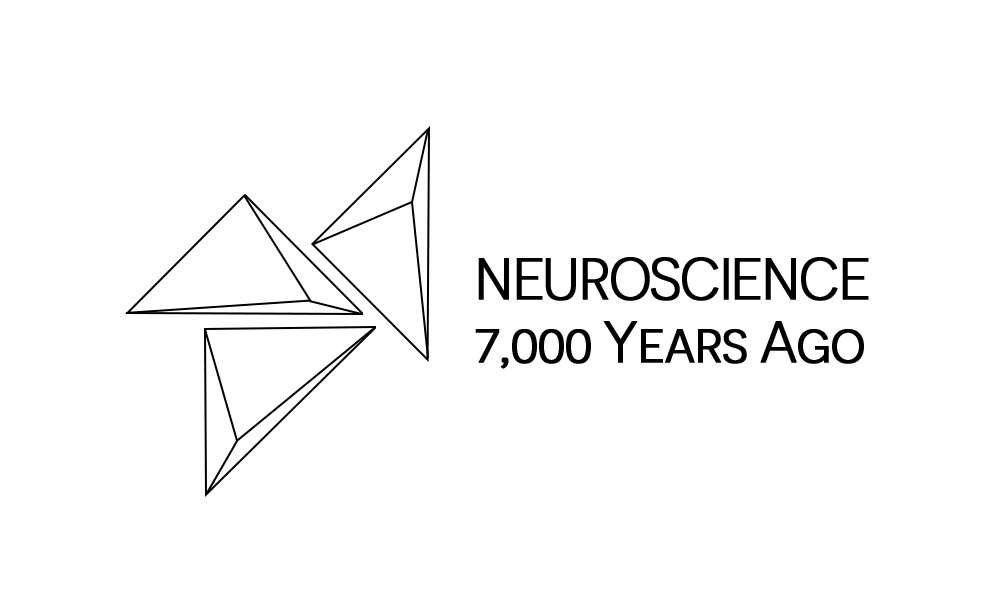
Galen Vivisection and Experimentation
“I am a man who attends only to what can be perceived by the senses, recognizing nothing except that which can be ascertained by the senses alone with the help of observation and retention in the memory, and not going beyond this to any other theoretical construction.”
That’s a great indicator of all his discoveries would be based on practical observations not just a theory might be wrong or right. With such a philosophy, it is easy to understand why Galen ardently practiced dissection. His dissections, however, did not include human bodies. Religious sentiment against conducting human autopsies was strong in the Roman Empire. In addition, the Roman legal system also protected the corpse from the dissector’s knife [1].
One of Galen’s most fascinating lectures is entitled On the Brain. In it he tells medical students how to conduct a systematic dissection of an ox brain. He issued the following directives in the year 177:
“Ox brains, ready prepared and stripped of most of the cranial parts are generally on sale in the large cities. If you think more bone than necessary adheres to them, order its removal by the butcher who sells them. When the part is suitably prepared, you will see the dura mater. Slice straight cuts on both sides of the mid-line down to the ventricles. Try immediately to examine the membrane that divides right from left ventricle [septum]. It has a nature like that of the brain as a whole and is thus easily broken if stretched too vigorously. When you have exposed properly all the parts under discussion, you will observe a third ventricle between the two anterior ventricles with a fourth behind it. You will see the duct on which the pineal gland is mounted passing to the ventricle in the middle”
We can notice from that how he was so precise and following scientific method during presenting his work to the student and teach everything in deep details to allow his followers to apply his approach again with the same preciseness and identifies many parts that deserve their attention.
In one set of experiments, he set out to find and cut the nerves to the lungs. He noticed that the struggling pig he was operating on stopped squealing but kept breathing immediately after he severed one pair of nerves in the throat. Galen confirmed this surprising finding before incredulous onlookers using bleating goats, barking dogs, and even roaring lions from Rome’s Coliseum (Figure 1).

He knew he had found the “nerves of voice.” These nerves, now known as the recurrent laryngeal nerves, are sometimes called Galen’s nerves in his honor.
- Spinal Cord Injury:
Galen cut the spinal cord at different levels in another set of experiments. One of his objectives was to determine which body parts below the cut would become paralyzed.
- He also cut halfway through the spinal cord in various animals. Here he noted that paralyses appeared on the same side of the body as the cut. After doing this on a monkey, he wrote:
“You have seen further in our dissection that transverse hemi-sections, which do not cut deeper than the center of the cord, do not paralyze all the inferior parts of the body, but only those directly beneath the incision, the right when the right side has been cut and vice versa.”
- In a related experiment, he showed that severing the spinal cord close to the skull leads to an immediate cessation of breathing.
- In contrast, the diaphragm continues to function if the cut is made lower.
These findings shed light on why one gladiator died immediately after a neck injury, whereas another was able to continue breathing after enduring a slightly lower sword wound.
- Aging:
Galen was a smart observer and noticed some of the changes that accompany old age. Among other things, he recognized that the brain becomes smaller in old animals. Although he did not have the material to confirm this change in humans, he deserves credit for providing an early description of brain atrophy in old age.
All of his observations were confirmed through his dissections. Galen’s inability to dissect human brains, combined with a willingness to generalize from the brains of barnyard animals to humans, led him to draw some incorrect conclusions about human neuroanatomy and neurophysiology.
References:
1 Finger, S.: ‘Minds behind the brain: A history of the pioneers and their discoveries’ (Oxford University Press, 2004. 2004)


